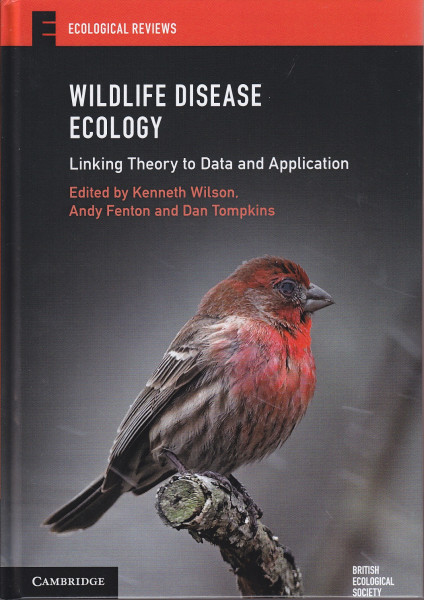
Publisher: Cambridge University Press, Cambridge
Publication Year: 2019
Binding: 2
Page Count: 690
ISBN Number: 9781107136564
Price: £89.99
Wildlife Disease Ecology: Linking Theory to Data and Application
Zoonotic diseases (those that infect humans but which originate in populations of wild animals), especially novel ones, sometimes receive quite high profile, e.g. avian influenza, Ebola and, more recently, coronaviruses.
The study of disease in wild animals, though, is something of a ‘Cinderella’ subject and this book does a valuable service in bringing together a wide range of case-studies, from carnations through to American buffalo, to show what a fertile area it is.
Three chapters may be of particular interest to BTO readers. One on Red Grouse shows the complex ways in which the parasite influences infected birds’ behaviour and physiology, one on the House Finch, describes how large-scale volunteer-collected data can help us understand disease spread, and one on Badgers explores how we measure the spread of infected individuals and some of the implications of this for management strategies.
This is a book aimed squarely at researchers, but it does start with a helpful glossary and many of the authors have attempted to write in a style that is accessible to non-specialists. In a move that should be copied by others, the publisher has provided non-technical summaries to all the chapters on its website, which provide at least the gist of each case, though making them a bit longer might have made them even more useful to those daunted by the full text.
Overall, this is a fascinating collection of studies that showcases why wildlife diseases are worthy of study and how combining field observations, experiments, mathematical models and the latest in genomic and molecular research provides not only research insight, but also contributes to effective conservation and management efforts.
Book reviewed by Rob Robinson
Buy this book




Share this page